An Improved Bald Eagle Search Algorithm for Global Path Planning of Unmanned Vessel in Complicated Waterways
Abstract
1. Introduction
1.1. Complicated Waters
1.2. Ship Collision Avoidance Path Planning Based on Deterministic Mathematical Methods
1.3. Ship Collision Avoidance Path Planning Based on Heuristic Algorithms
2. Methodology
2.1. Algorithm Structure Improvement
2.2. Improvement of Fitness Function
2.3. Curve Optimization Module
2.4. SAHBES Iteration Steps
3. Simulation Tests
3.1. Path Planning Simulation with Obstacles
3.2. Trap Obstacle Path Planning Experiment
3.2.1. Trap Obstacles Simulation I
3.2.2. Trap Obstacles Simulation II
3.2.3. Trap Obstacles Simulation III
4. Conclusions
Author Contributions
Funding
Institutional Review Board Statement
Informed Consent Statement
Data Availability Statement
Conflicts of Interest
Appendix A
References
- Xie, S.; Chu, X.M.; Liu, C.G.; Wu, Q. A Review and Prospect of Ship Intelligent Collision Avoidance System. J. Trans. Inf. Saf. 2016. [Google Scholar] [CrossRef]
- Xie, X.L.; He, P.; He, A.; Xin, J.Y. Collision Avoidance Path Planning of Ships in Complicated Water Areas. J. Chongqing Jiaotong Univ. Nat. Sci. 2019, 38, 12. [Google Scholar]
- Iijima, Y.; Hagiwara, H. Results of collision avoidance maneuver experiments using a knowledge-based autonomous piloting system. J. Navig. 1991, 44, 194–204. [Google Scholar] [CrossRef]
- Tsou, M. Multi-target collision avoidance route planning under an ECDIS framework. Ocean Eng. 2016, 121, 268–278. [Google Scholar] [CrossRef]
- Zhang, G.; Deng, Y.; Zhang, W. Robust neural path-following control for under actuated ships with the DVS obstacles avoidance guidance. Ocean Eng. 2017, 143, 198–208. [Google Scholar] [CrossRef]
- Jeong, M.G.; Lee, E.B.; Lee, M.; Jung, J.Y. Multi-criteria route planning with risk contour map for smart navigation. Ocean Eng. 2019, 172, 72–85. [Google Scholar] [CrossRef]
- Huang, Y.M.; Chen, L.Y.; Van Gelder, P. Generalized velocity obstacle algorithm for preventing ship collisions at sea. Ocean Eng. 2019, 173, 142–156. [Google Scholar] [CrossRef]
- Yu, J.G.; Liu, Z.J.; Zhang, X.K. DCA-Based Collision Avoidance Path Planning for Marine Vehicles in Presence of the Multi-Ship Encounter Situation. J. Mar. Sci. Eng. 2022, 10, 529. [Google Scholar] [CrossRef]
- Chen, P.F.; Huang, Y.M.; Papadimitriou, E.; Mou, J.M.; Van Gender, P. Global path planning for autonomous ship: A hybrid approach of Fast Marching Square and velocity obstacles methods. Ocean Eng. 2020, 214, 107793. [Google Scholar] [CrossRef]
- Zhao, B.G.; Zhang, X.K.; Liang, C.L. A novel path-following control algorithm for surface vessels based on global course constraint and nonlinear feedback technology. Appl. Ocean Res. 2021, 111, 102635. [Google Scholar] [CrossRef]
- Guo, S.; Zhang, X.; Zheng, Y.; Du, Y. An Autonomous Path Planning Model for Unmanned Ships Based on Deep Reinforcement Learning. Sensors 2020, 20, 426. [Google Scholar] [CrossRef]
- Li, L.; Wu, D.; Huang, Y.; Yuan, Z.-M. A path planning strategy unified with a COLREGS collision avoidance function based on deep reinforcement learning and artificial potential field. Appl. Ocean Res. 2021, 113, 102759. [Google Scholar] [CrossRef]
- Ma, Y.; Hu, M.; Yan, X. Multi-objective path planning for unmanned surface vehicle with currents effects. ISA Trans. 2018, 75, 137–156. [Google Scholar] [CrossRef] [PubMed]
- Singh, Y.; Sharma, S.; Sutton, R.; Hatton, D.; Khan, A. A constrained A* approach towards optimal path planning for an unmanned surface vehicle in a maritime environment containing dynamic obstacles and ocean currents. Ocean Eng. 2018, 169, 187–201. [Google Scholar] [CrossRef]
- He, Z.; Liu, C.; Chu, X.; Negenborn, R.R.; Wu, Q. Dynamic anti-collision A-star algorithm for multi-ship encounter situations. Appl. Ocean Res. 2021, 118, 102995. [Google Scholar] [CrossRef]
- Xie, L.; Xue, S.; Zhang, J.; Zhang, M.; Tian, W.; Haugen, S. A path planning approach based on multi-direction A* algorithm for ships navigating within wind farm waters. Ocean Eng. 2019, 184, 311–322. [Google Scholar] [CrossRef]
- Tharwat, A.; Elhoseny, M.; Hassanien, A.E.; Gabel, T.; Kumar, A. Intelligent Bézier curve-based path planning model using Chaotic Particle Swarm Optimization algorithm. Clust. Comput. 2018, 22, 4745–4766. [Google Scholar] [CrossRef]
- Li, J.; Wang, H.; Zhao, W.; Xue, Y. Ship’s Trajectory Planning Based on Improved Multiobjective Algorithm for Collision Avoidance. J. Adv. Transp. 2019, 2019, 4068783. [Google Scholar] [CrossRef]
- Woo, J.; Kim, N. Collision avoidance for an unmanned surface vehicle using deep reinforcement learning. Ocean Eng. 2020, 199, 107001. [Google Scholar] [CrossRef]
- Xue, H. A quasi-reflection based SC-PSO for ship path planning with grounding avoidance. Ocean Eng. 2022, 247, 110772. [Google Scholar] [CrossRef]
- Han, S.; Wang, L.; Wang, Y.; He, H. A dynamically hybrid path planning for unmanned surface vehicles based on non-uniform Theta* and improved dynamic windows approach. Ocean Eng. 2022, 257, 111655. [Google Scholar] [CrossRef]
- Alsattar, H.A.; Zaidan, A.A.; Zaidan, B.B. Novel meta-heuristic bald eagle search optimisation algorithm. Artif. Intell. Rev. 2019, 53, 2237–2264. [Google Scholar] [CrossRef]
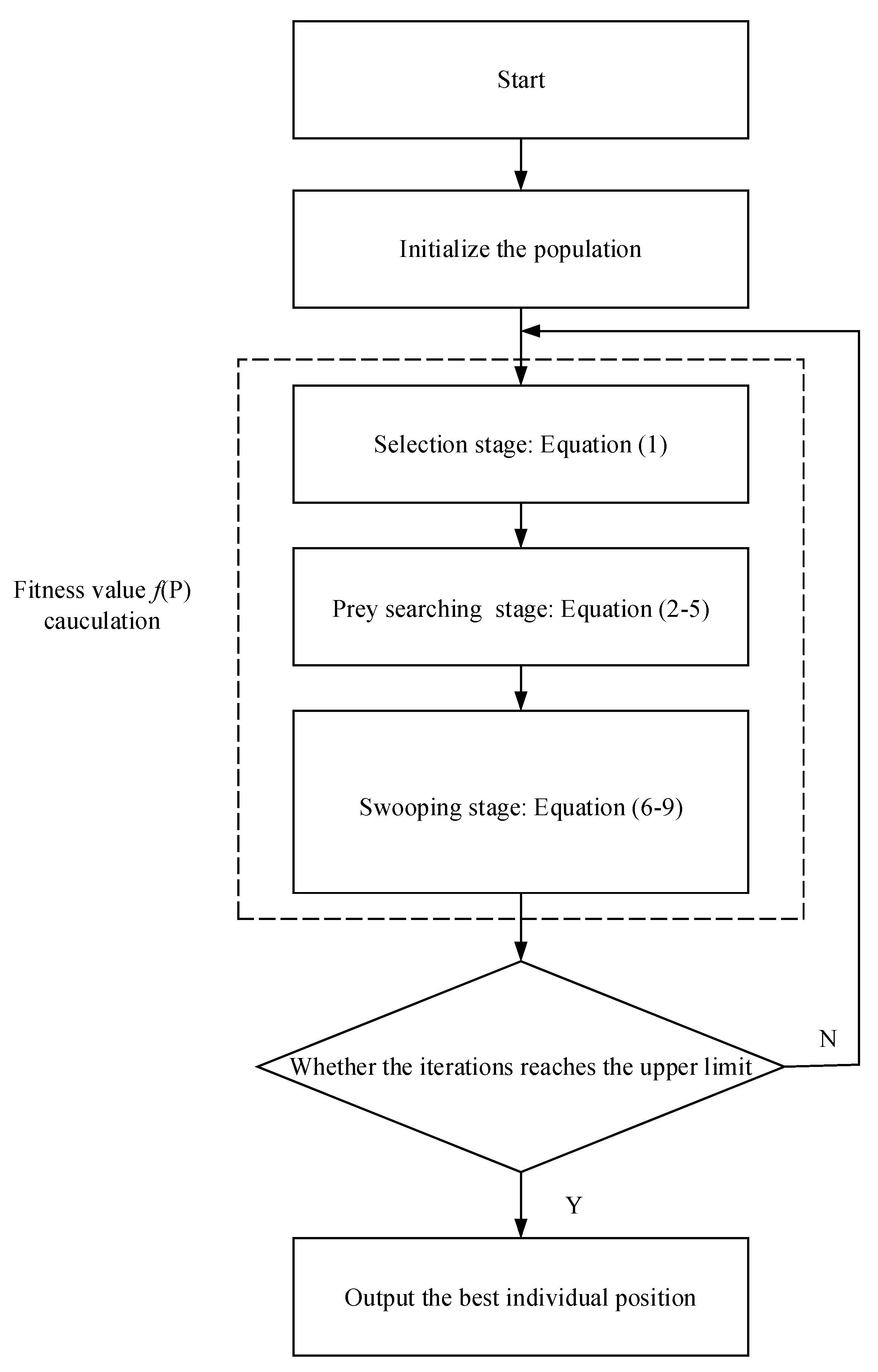
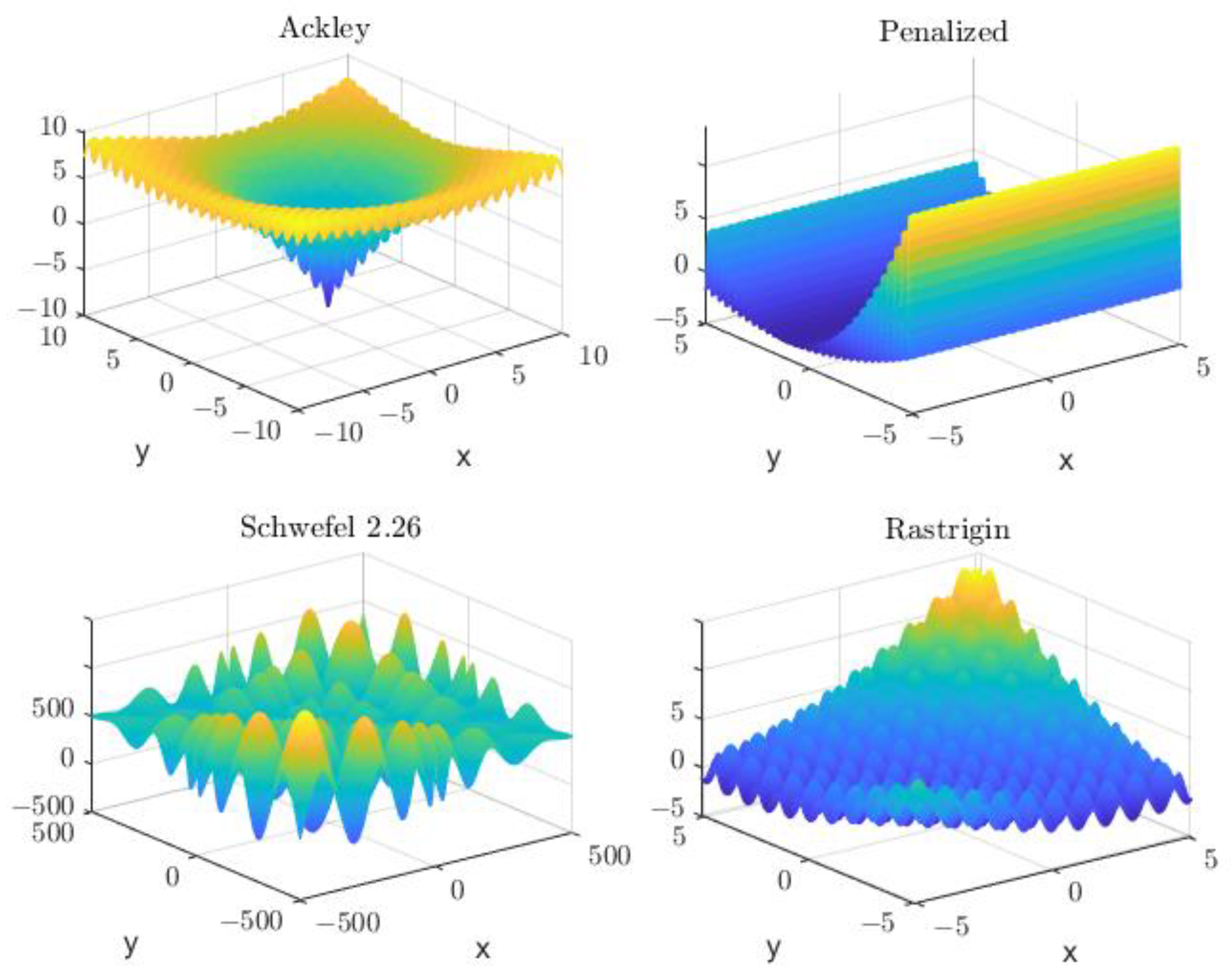
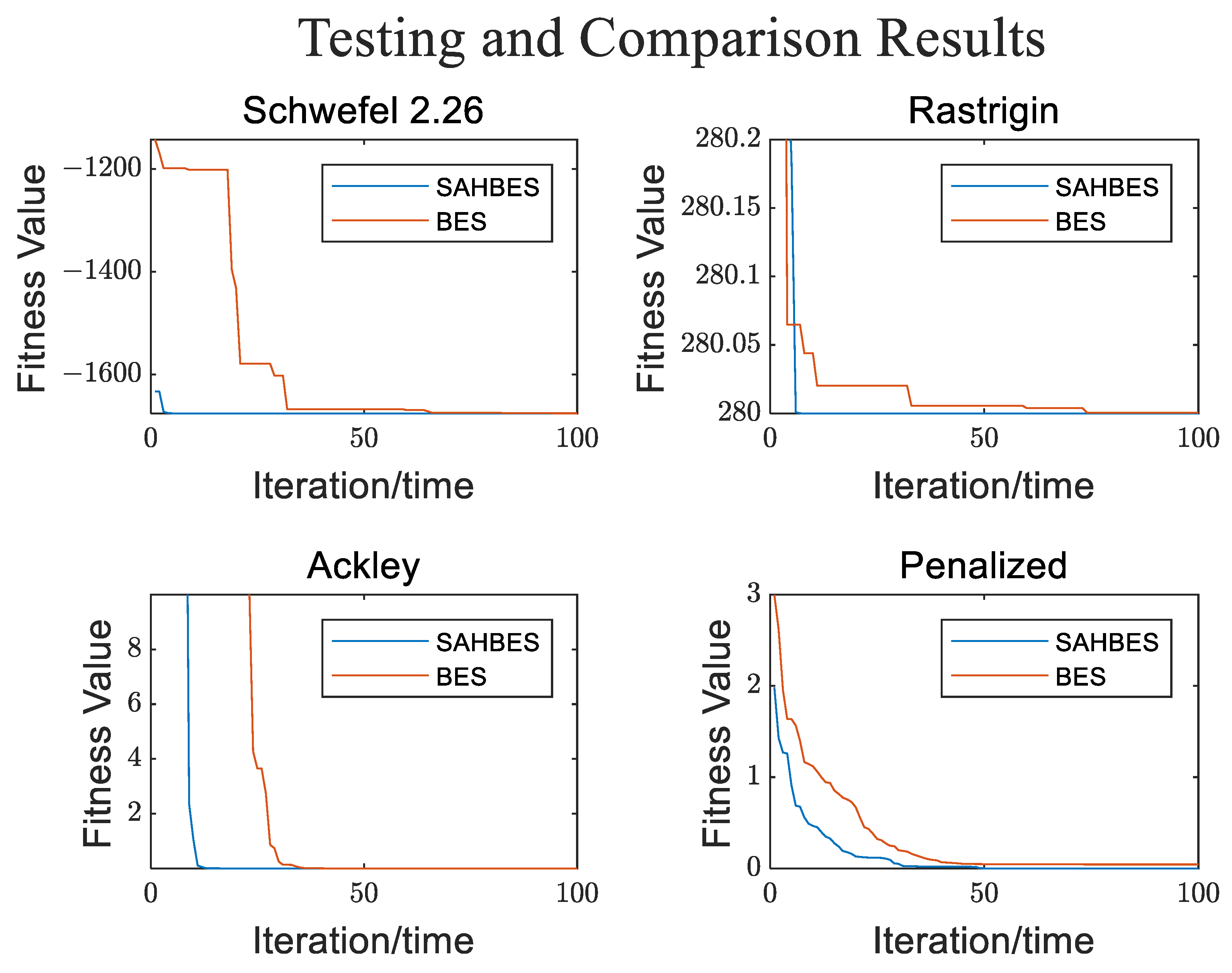
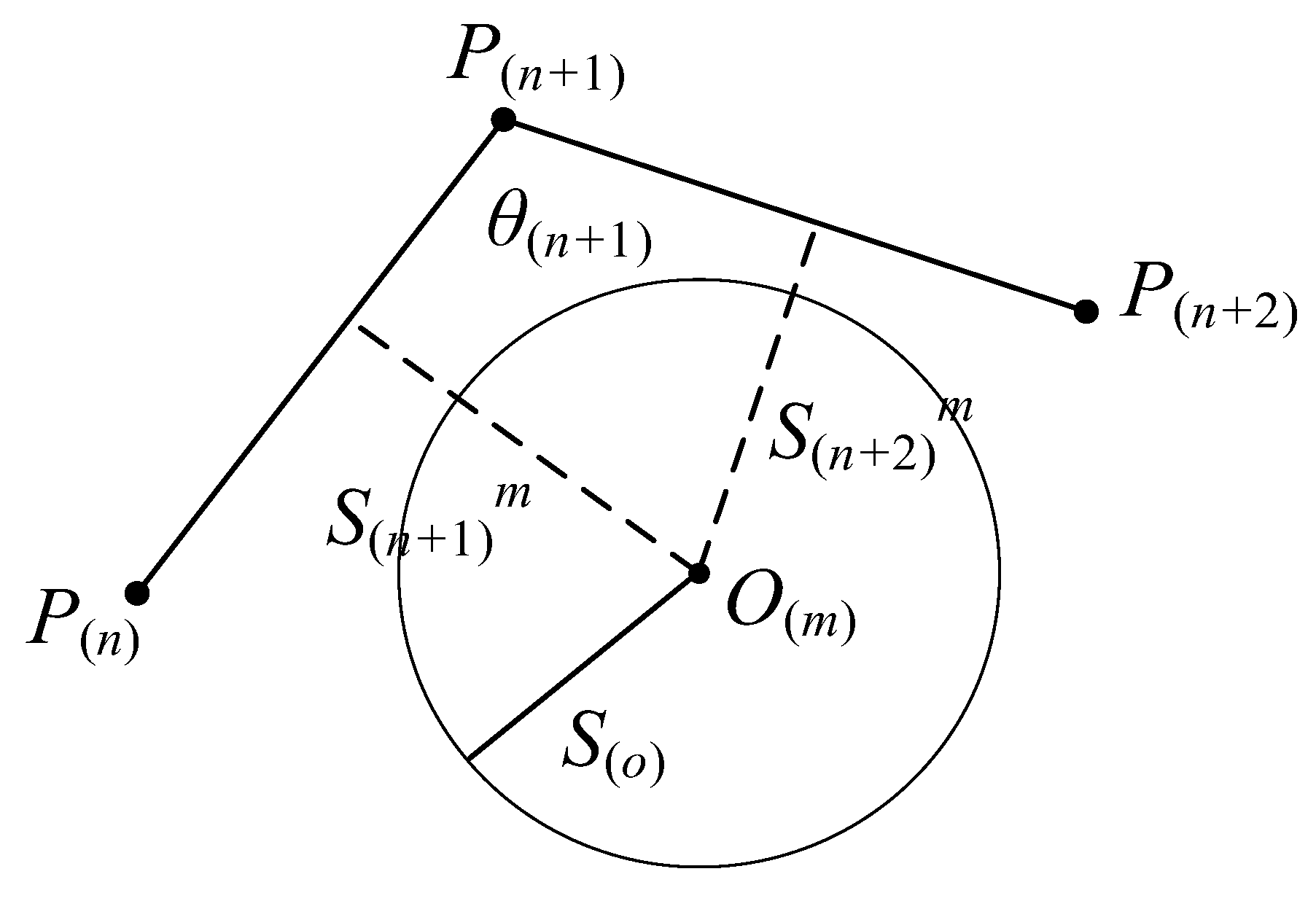
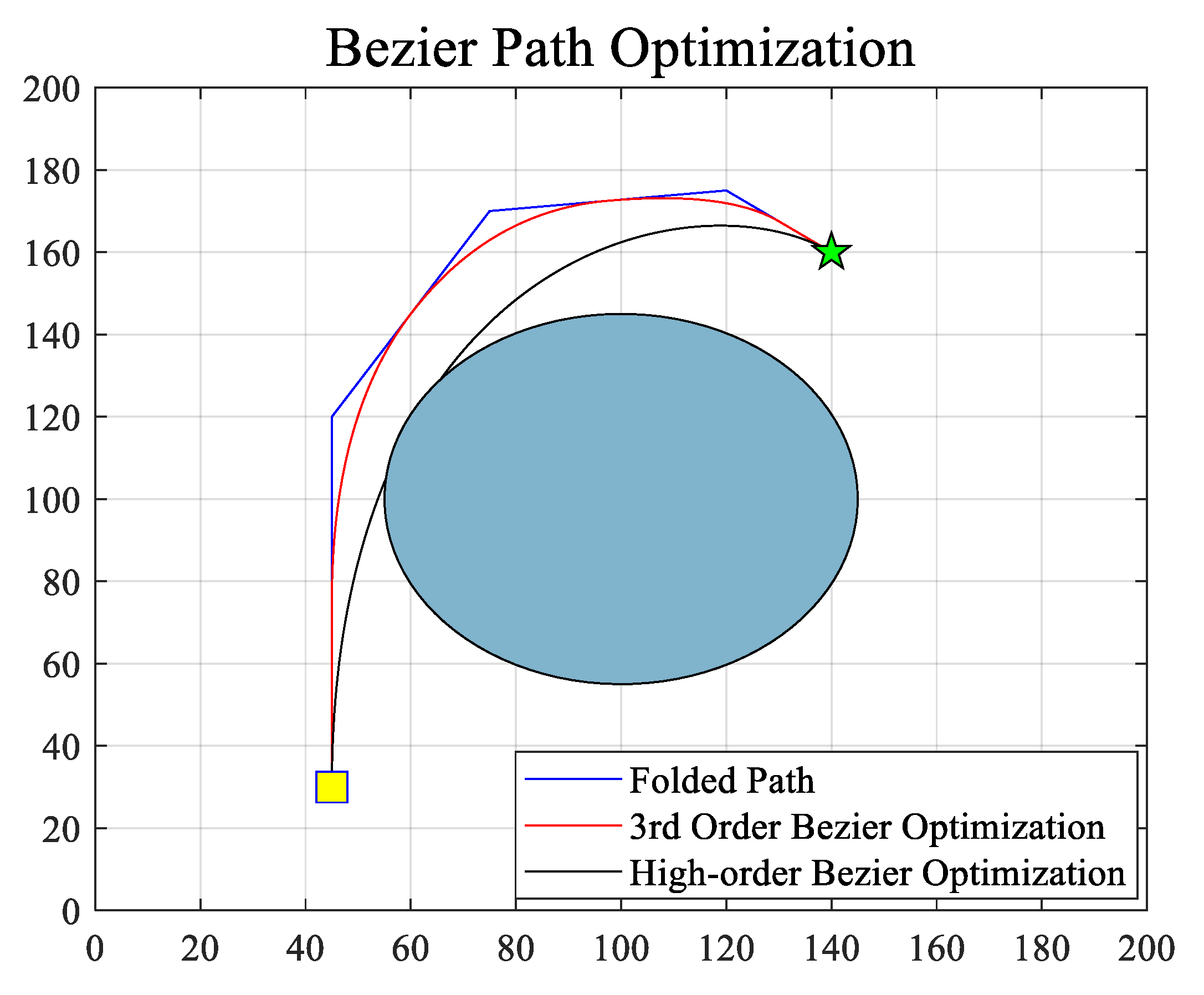

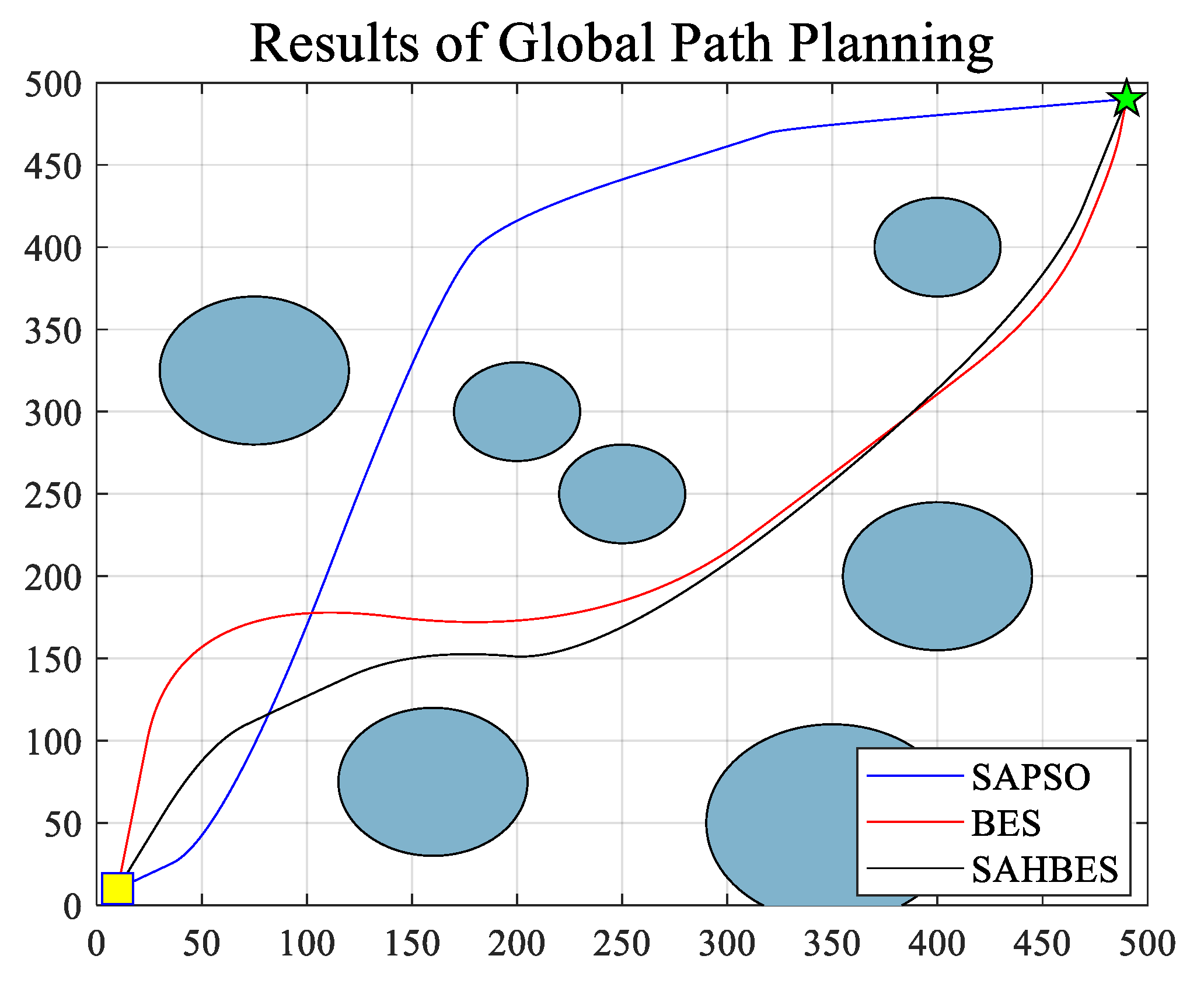
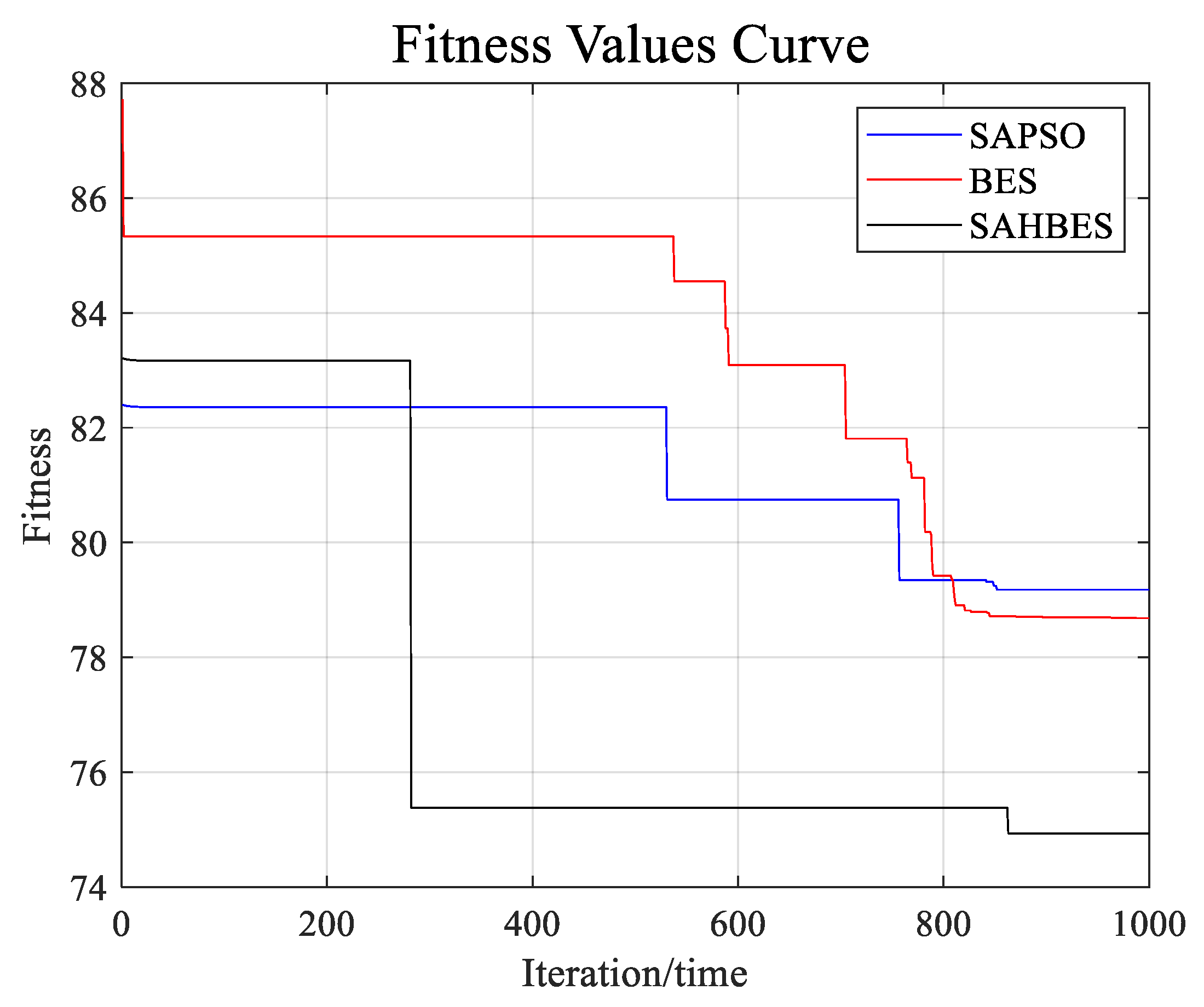
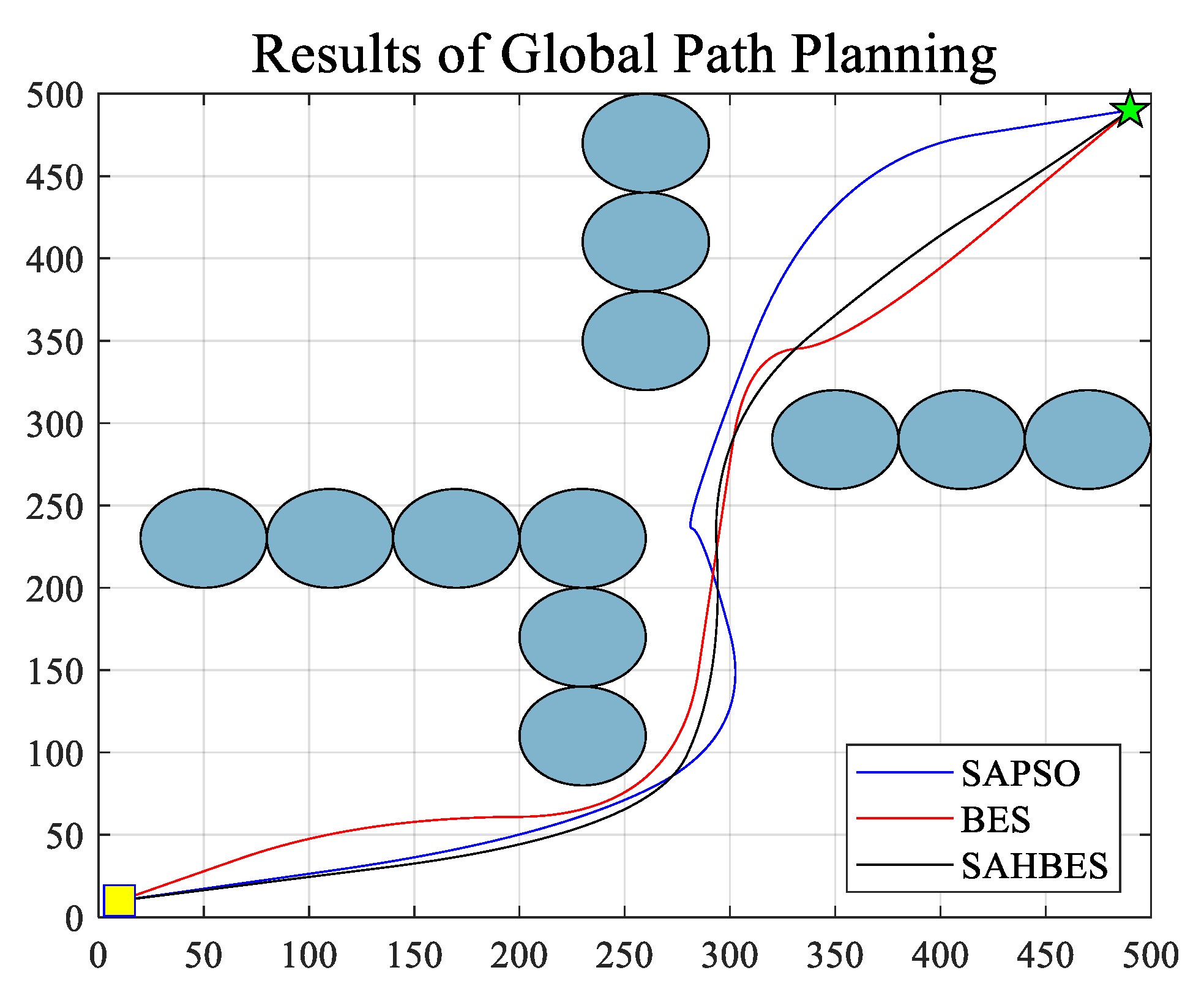
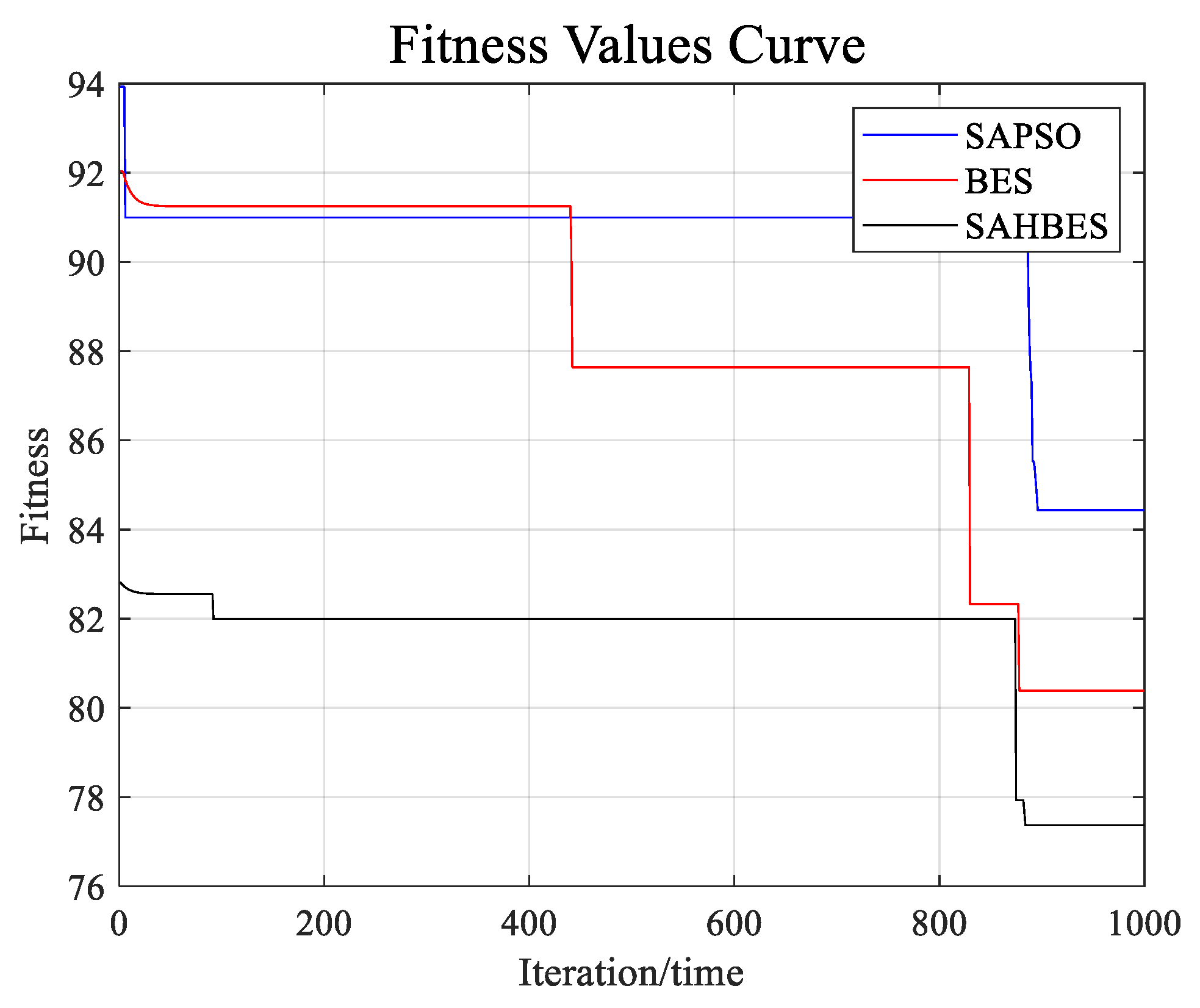
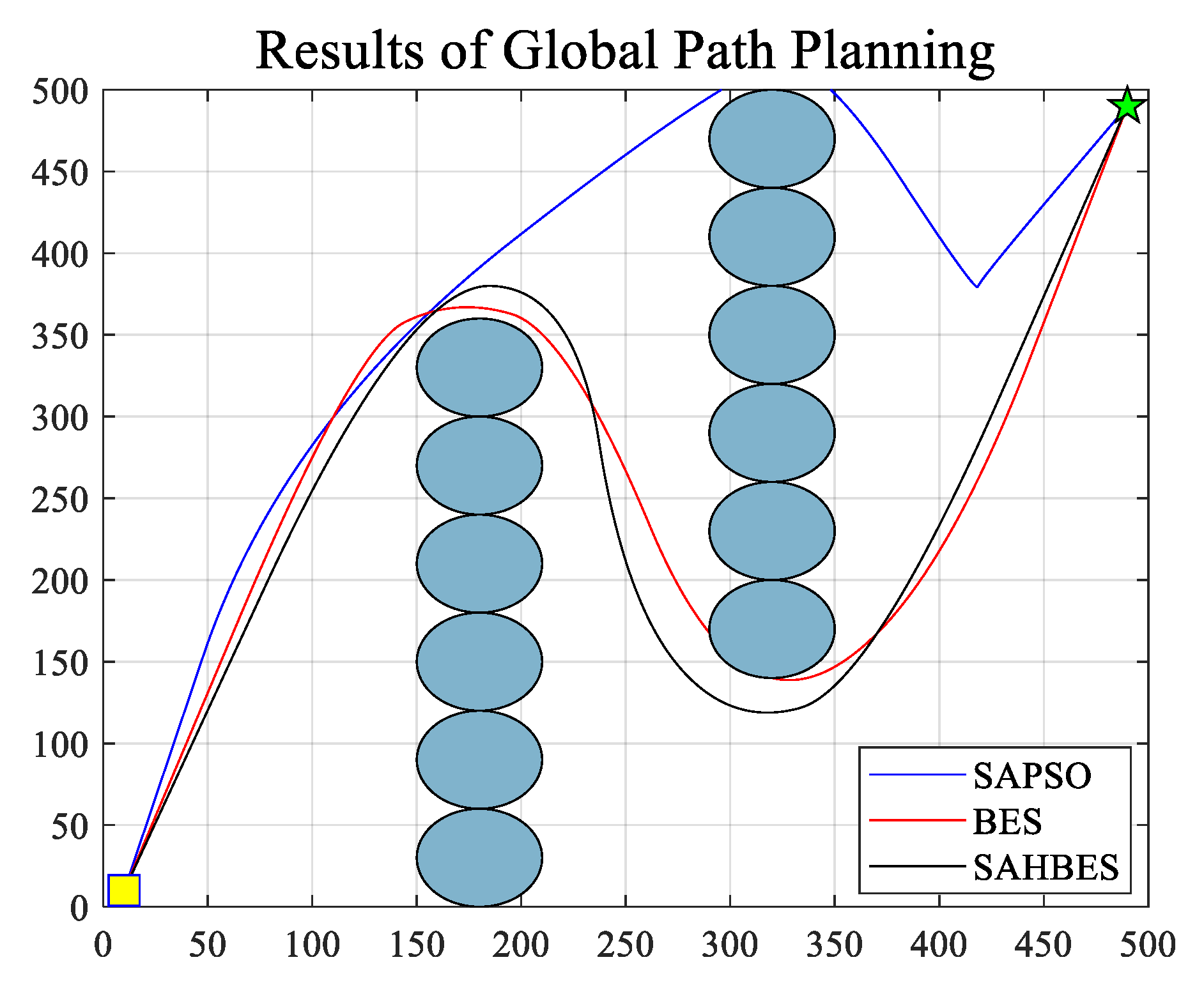
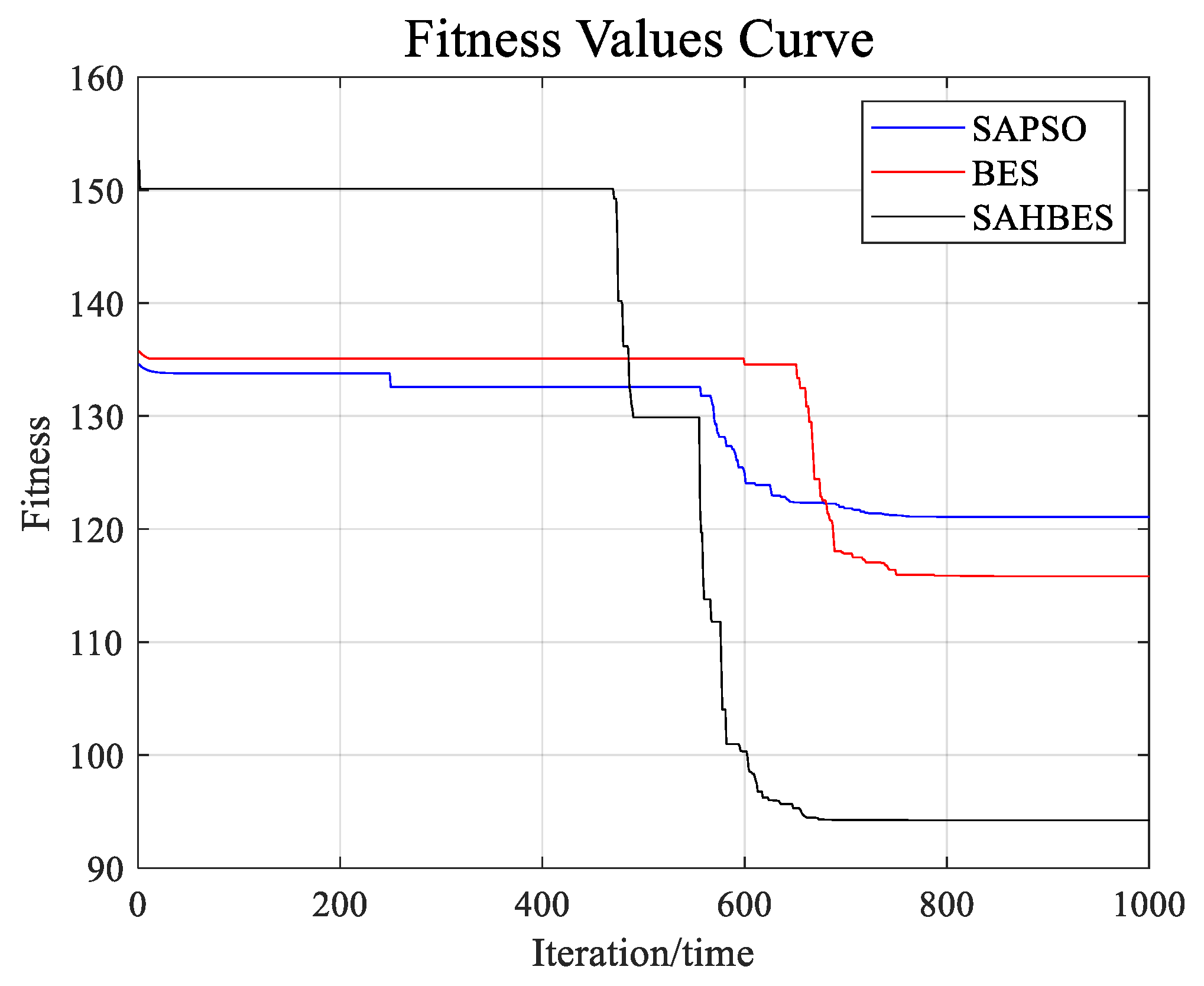
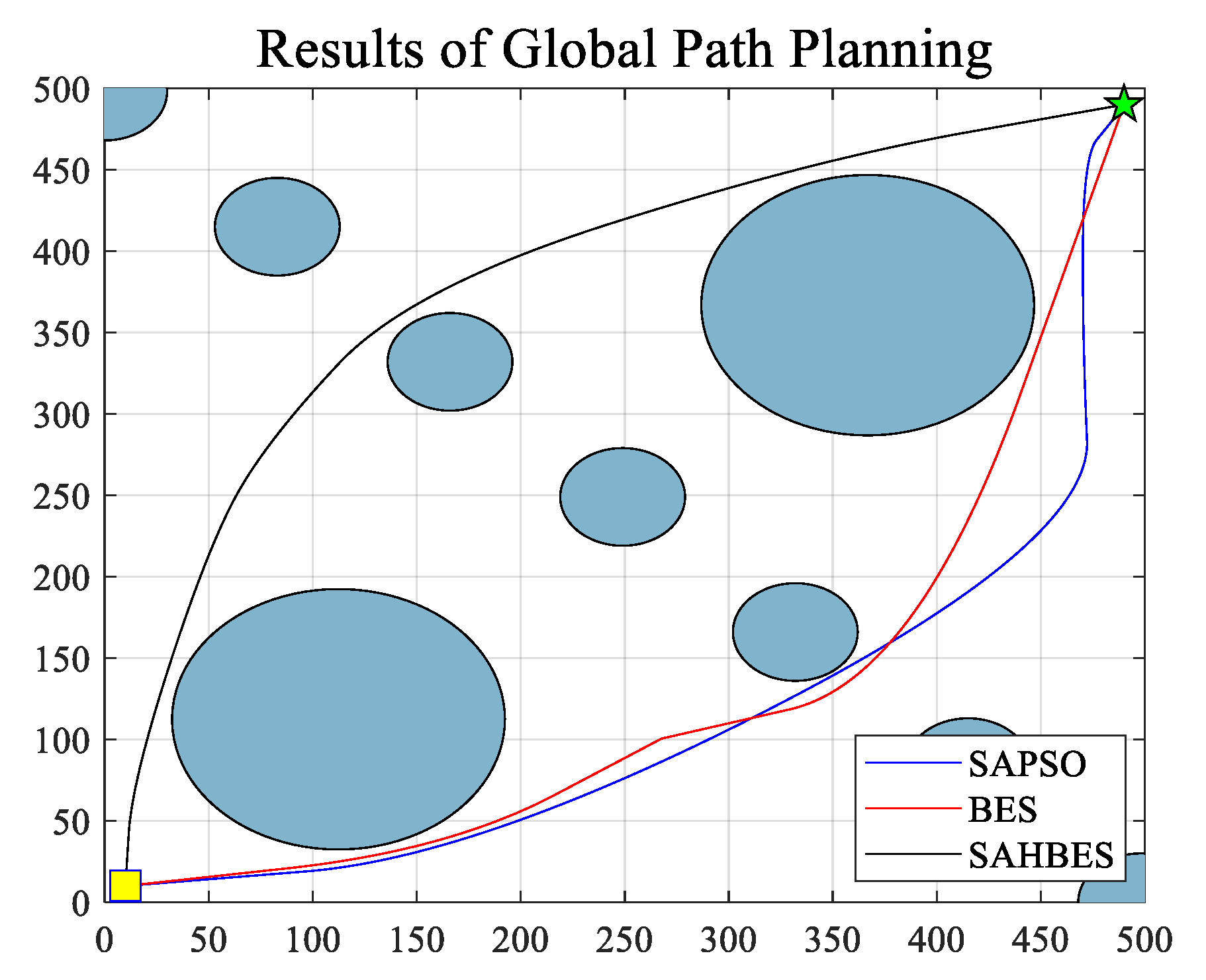
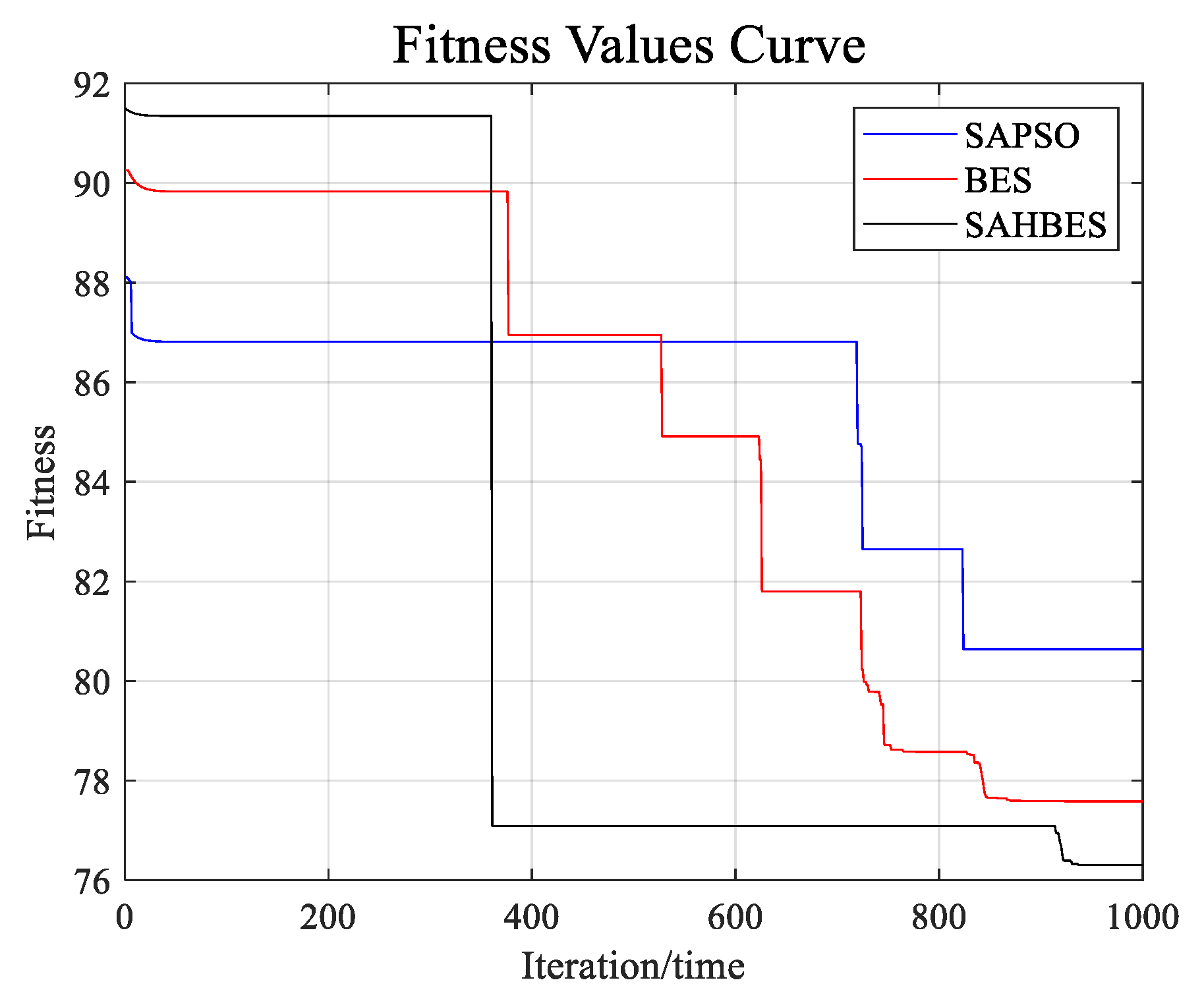
| No. | Function’s Name | Dim | Search Interval | Min-Value | Min-Coordinate |
|---|---|---|---|---|---|
| F1 | Ackley | 30 | [−10, 10] | 8.88178 × 10−16 | (2,2) |
| F2 | Penalized | 30 | [−5, 5] | 64 | ([−5:1:5],1) |
| F3 | Schwefel 2.26 | 30 | [−500, 500] | −1675.93 | (421,421) |
| F4 | Rastrigin | 30 | [−5.12, 5.12] | 10,230 | ([−5.02:1:2.98],[2.98:−1:−5.02]) |
| Algorithm | Population Number | Max Iterations | Fitness Function | Other Parameters |
|---|---|---|---|---|
| SAPSO | 20 | 1000 | c1, c2, w, Vmax | |
| BES | 20 | 1000 | c1, c2, α, R | |
| SAHBES | 20 | 1000 | c1, c2, α, R |
Disclaimer/Publisher’s Note: The statements, opinions and data contained in all publications are solely those of the individual author(s) and contributor(s) and not of MDPI and/or the editor(s). MDPI and/or the editor(s) disclaim responsibility for any injury to people or property resulting from any ideas, methods, instructions or products referred to in the content. |
© 2023 by the authors. Licensee MDPI, Basel, Switzerland. This article is an open access article distributed under the terms and conditions of the Creative Commons Attribution (CC BY) license (https://creativecommons.org/licenses/by/4.0/).
Share and Cite
Chen, Y.; Wu, W.; Jiang, P.; Wan, C. An Improved Bald Eagle Search Algorithm for Global Path Planning of Unmanned Vessel in Complicated Waterways. J. Mar. Sci. Eng. 2023, 11, 118. https://doi.org/10.3390/jmse11010118
Chen Y, Wu W, Jiang P, Wan C. An Improved Bald Eagle Search Algorithm for Global Path Planning of Unmanned Vessel in Complicated Waterways. Journal of Marine Science and Engineering. 2023; 11(1):118. https://doi.org/10.3390/jmse11010118
Chicago/Turabian StyleChen, Yongjun, Wenhao Wu, Pengfei Jiang, and Chengpeng Wan. 2023. "An Improved Bald Eagle Search Algorithm for Global Path Planning of Unmanned Vessel in Complicated Waterways" Journal of Marine Science and Engineering 11, no. 1: 118. https://doi.org/10.3390/jmse11010118
APA StyleChen, Y., Wu, W., Jiang, P., & Wan, C. (2023). An Improved Bald Eagle Search Algorithm for Global Path Planning of Unmanned Vessel in Complicated Waterways. Journal of Marine Science and Engineering, 11(1), 118. https://doi.org/10.3390/jmse11010118





